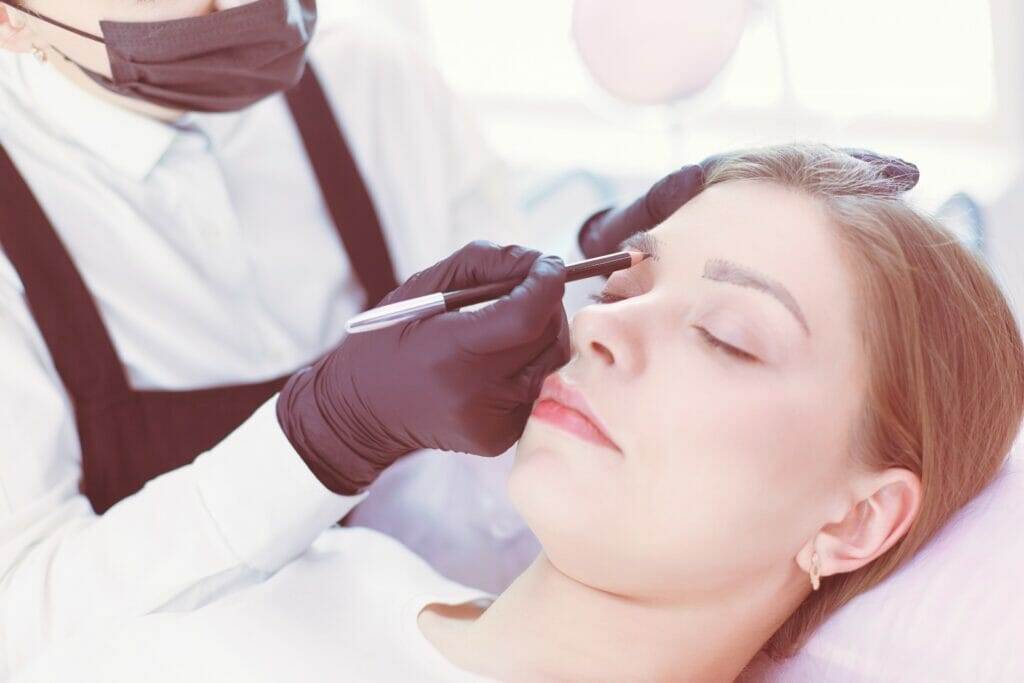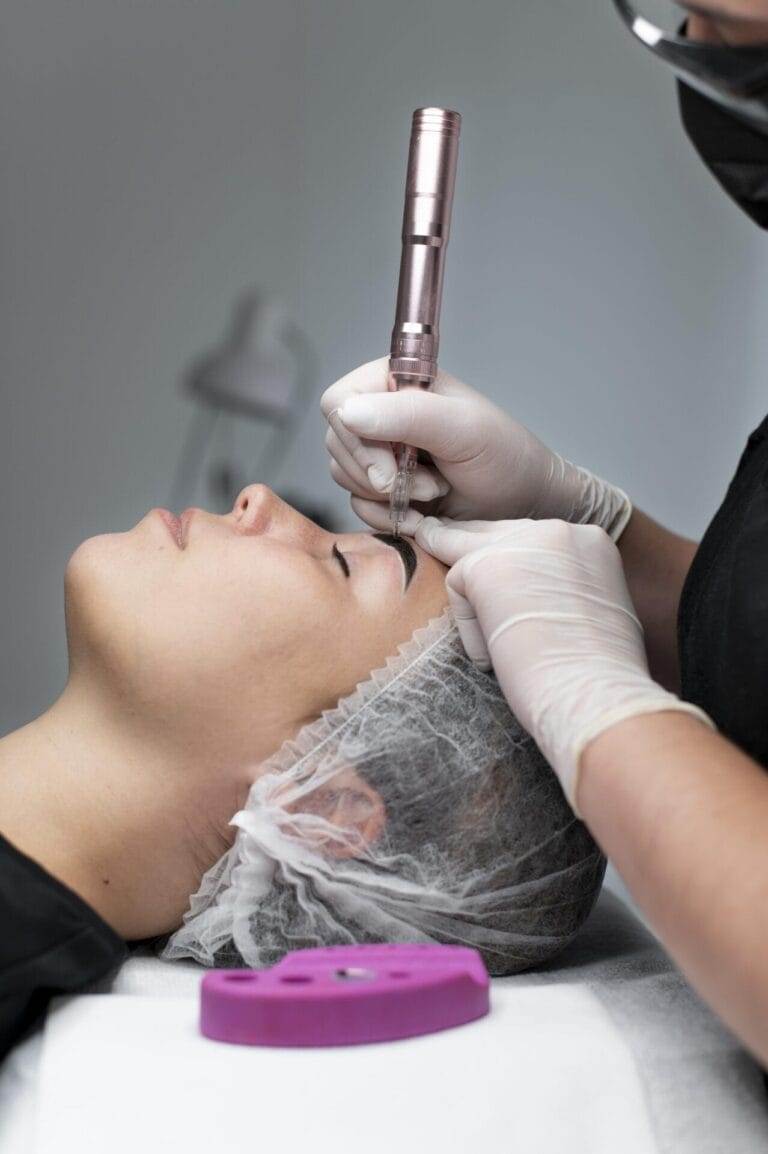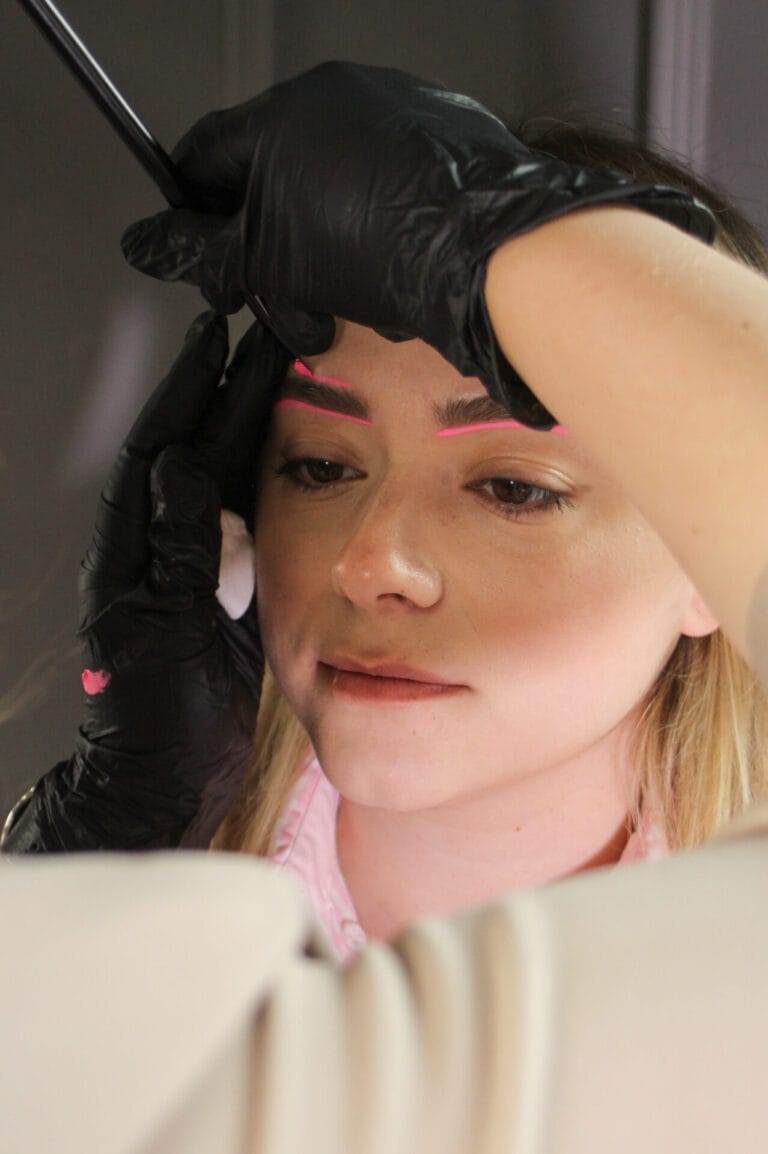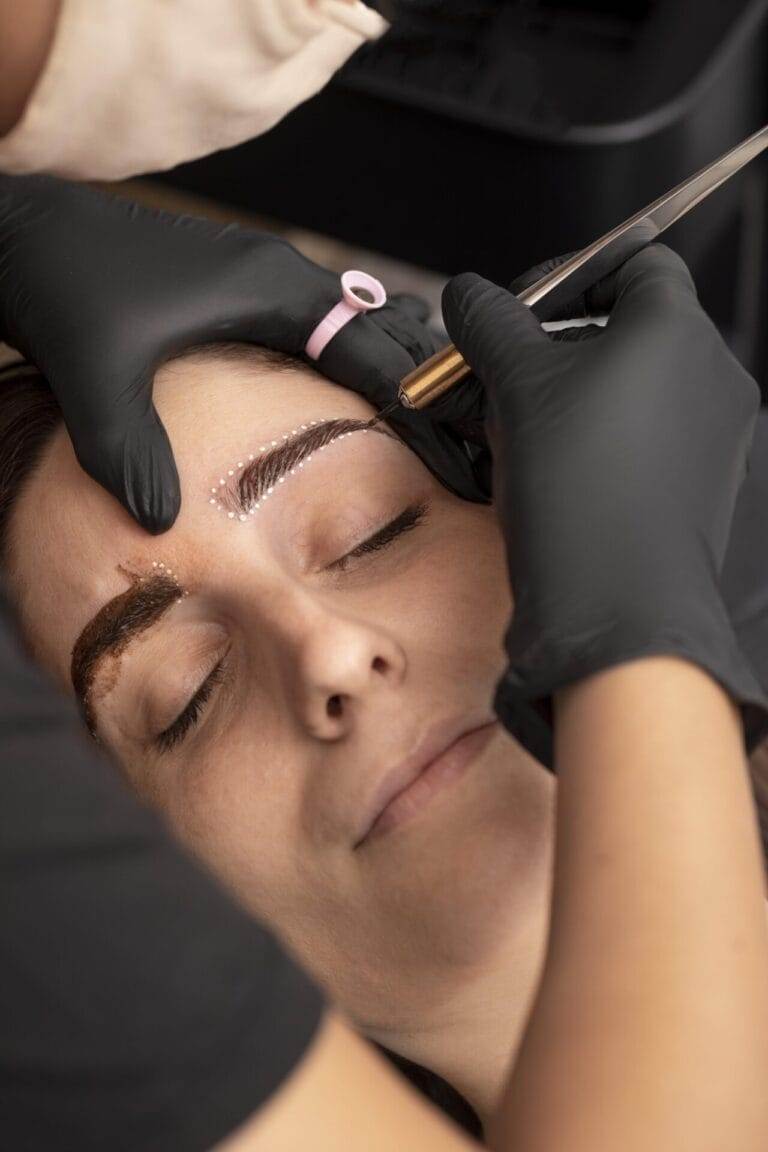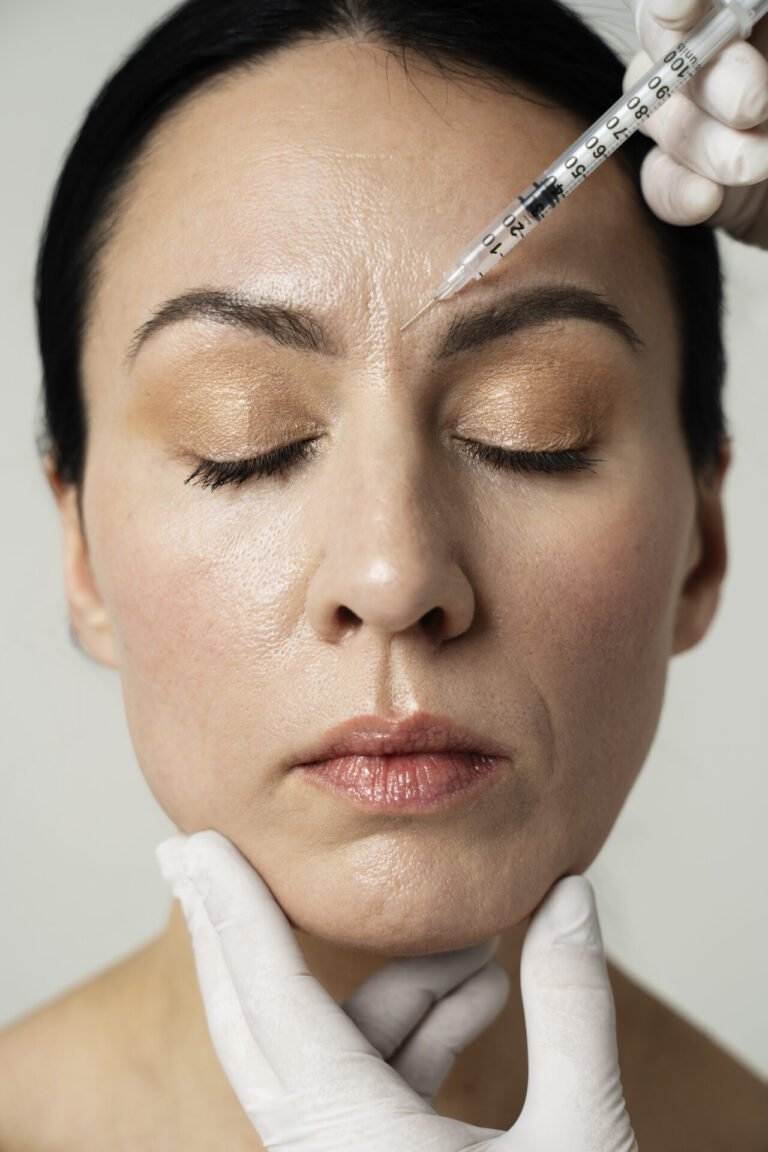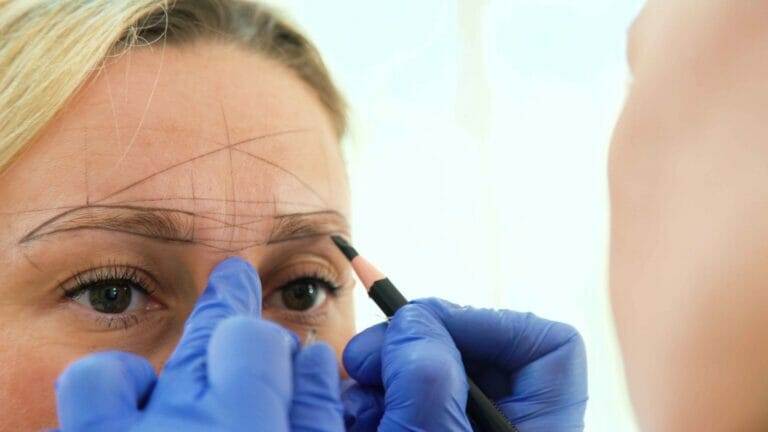Microblading is a semi-permanent eyebrow tattooing technique that involves using a small handheld tool to create hair-like strokes on the skin. This technique is gaining popularity because it provides a natural-looking solution for those who want to enhance their eyebrows. Unlike traditional eyebrow tattoos, microblading creates a more realistic and three-dimensional effect, mimicking the appearance of real hair.
One of the main benefits of microblading is that it can help individuals achieve their desired eyebrow shape and fullness. Many people struggle with sparse or uneven eyebrows, and microblading offers a solution by filling in gaps and creating a more defined shape. This can save time in the morning as individuals no longer need to spend time filling in their brows with makeup. Additionally, microblading can boost self-confidence and improve overall appearance.
Preparing for Your Microblading Appointment: What to Expect
Before your microblading appointment, you will typically have a consultation with the microblading artist. During this consultation, you will discuss your desired eyebrow shape and thickness, as well as any concerns or questions you may have. The artist will also assess your skin type and determine if you are a suitable candidate for the procedure.
In preparation for your appointment, you will receive pre-treatment instructions from the microblading artist. These instructions may include avoiding certain medications or supplements that can thin the blood, such as aspirin or ibuprofen. It is also important to avoid alcohol and caffeine before your appointment, as they can increase sensitivity.
On the day of your appointment, it is recommended to arrive with clean skin free of makeup or skincare products. It is also important to bring any reference photos or examples of your desired eyebrow shape to ensure clear communication with the artist.
Designing Your Dream Eyebrow Shape: Factors to Consider
When designing your dream eyebrow shape, there are several factors to consider. One important factor is your face shape and bone structure. Different eyebrow shapes can complement different face shapes, so it is important to choose a shape that enhances your natural features. For example, those with round faces may benefit from more arched eyebrows to create a more elongated appearance.
Another factor to consider is your natural eyebrow shape and thickness. Microblading can enhance your natural brows by filling in gaps and creating a more defined shape, but it is important to work with the existing structure of your brows. The microblading artist will assess your natural brows and work with you to create a shape that suits your face.
Personal style and preferences should also be taken into account when designing your dream eyebrow shape. Some individuals prefer a more natural and subtle look, while others may want a bolder and more dramatic appearance. Communicating your preferences with the microblading artist will help ensure that you achieve the desired results.
The Microblading Process: Step-by-Step Guide and Timeline
The microblading process typically involves several steps and can take a few hours to complete. Here is a step-by-step guide to the process:
1. Numbing the area: Before the microblading procedure begins, a topical numbing cream is applied to the eyebrows to minimize any discomfort.
2. Drawing the eyebrow shape: The microblading artist will use a special pencil or marker to draw the desired eyebrow shape on your skin. This step allows you to see and approve the shape before the microblading begins.
3. Microblading the eyebrows: Using a small handheld tool with tiny needles, the microblading artist will create hair-like strokes on the skin, following the drawn shape. The pigment is deposited into the superficial layers of the skin, creating a natural-looking effect.
4. Aftercare instructions: After the microblading is complete, the artist will provide you with aftercare instructions to ensure optimal healing and long-lasting results.
The healing process typically takes about 4-6 weeks, during which time the color of the eyebrows may appear darker and more intense. It is important to follow the aftercare instructions provided by the microblading artist to ensure proper healing and to avoid any complications.
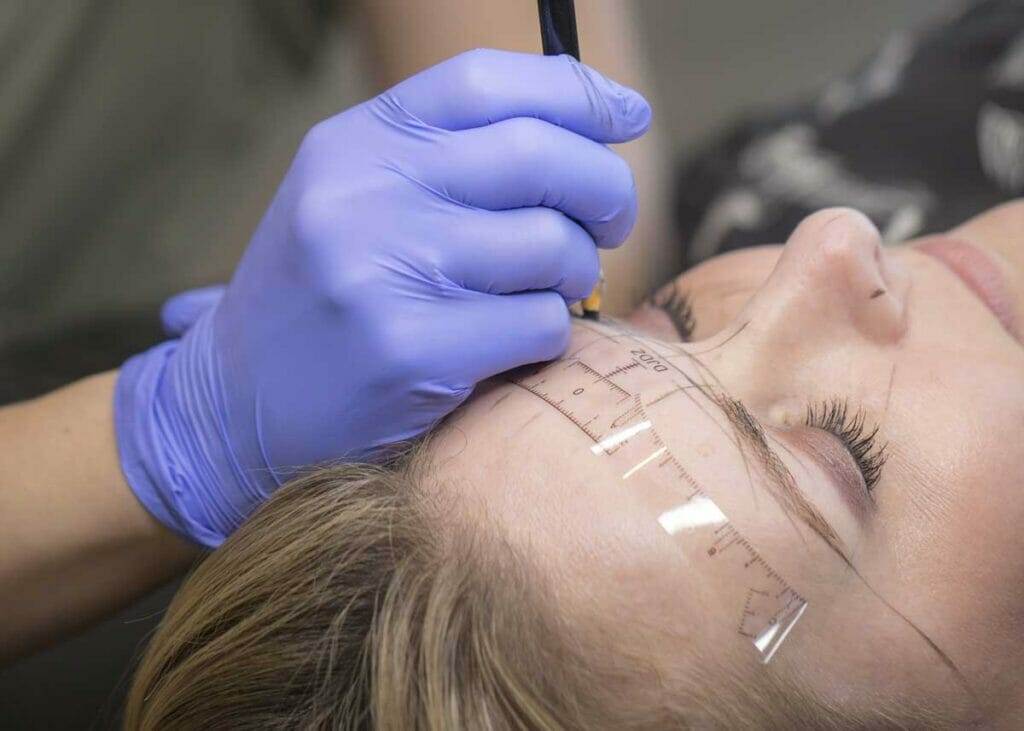
Pain Management and Aftercare: Dos and Don’ts for Optimal Results
Pain management during the microblading procedure can vary from person to person. The topical numbing cream applied before the procedure helps minimize any discomfort, but some individuals may still experience mild pain or discomfort during the process. It is important to communicate with your microblading artist if you are experiencing any pain so that they can make adjustments as needed.
Aftercare instructions are crucial for optimal healing and long-lasting results. Some general aftercare tips include:
– Avoid getting your eyebrows wet for at least 24 hours after the procedure.
– Avoid touching or scratching your eyebrows during the healing process.
– Avoid applying makeup or skincare products directly on your eyebrows.
– Avoid excessive sweating or exposure to sunlight during the healing process.
It is important to follow these aftercare instructions to ensure proper healing and to avoid any complications, such as infection or pigment loss.
Microblading vs. Other Eyebrow Techniques: Pros and Cons
Microblading is just one of many eyebrow techniques available today. It is important to understand the pros and cons of each technique to make an informed decision. Here is a comparison of microblading to other eyebrow techniques:
– Traditional eyebrow tattooing: Traditional eyebrow tattoos use a machine to deposit pigment into the skin, creating a more solid and filled-in appearance. However, this technique can often look unnatural and may fade to a bluish color over time.
– Eyebrow tinting: Eyebrow tinting involves using a semi-permanent dye to darken the eyebrows. This technique can enhance the appearance of sparse brows, but it does not create the same hair-like strokes as microblading.
– Eyebrow extensions: Eyebrow extensions involve attaching individual hairs to the existing brows using adhesive. This technique can create a fuller appearance, but it requires regular maintenance and may not last as long as microblading.
Each technique has its own advantages and disadvantages, so it is important to consider your personal preferences and desired results when choosing the right technique for you.
Common Microblading Mistakes and How to Avoid Them
There are several common microblading mistakes that individuals should be aware of in order to avoid them. One mistake is over-plucking the eyebrows before the microblading appointment. It is important to have enough natural hair for the microblading artist to work with, so avoid over-plucking or waxing your eyebrows in the weeks leading up to your appointment.
Choosing the wrong eyebrow shape is another common mistake. It is important to work with your natural brow shape and bone structure when designing your dream eyebrow shape. Communicate your preferences with the microblading artist and trust their expertise in creating a shape that suits your face.
Not following aftercare instructions is another common mistake that can lead to complications and less-than-desirable results. It is important to follow the aftercare instructions provided by the microblading artist to ensure proper healing and to avoid any infections or pigment loss.
Touch-Up and Maintenance: How Often Should You Get Your Brows Done?
After the initial microblading procedure, a touch-up appointment is typically scheduled 4-6 weeks later. This touch-up appointment allows the microblading artist to assess the healed results and make any necessary adjustments or additions. It is important to attend this touch-up appointment to ensure optimal results.
The frequency of touch-up appointments can vary depending on individual factors such as skin type, lifestyle, and personal preferences. On average, touch-up appointments are recommended every 1-2 years to maintain the desired shape and color of the eyebrows. However, some individuals may require more frequent touch-ups, while others may be able to go longer between appointments.
In addition to touch-up appointments, there are several maintenance tips that can help prolong the results of microblading. Avoid excessive exposure to sunlight, as this can cause the pigment to fade more quickly. It is also important to avoid using harsh skincare products or exfoliants directly on the eyebrows, as this can cause the pigment to fade or become patchy.
Microblading for Different Skin Types: Tips and Considerations
Microblading can be performed on various skin types, but there are some tips and considerations to keep in mind for different skin types.
For those with oily skin, it is important to manage excess oil production before and after the microblading procedure. Excess oil can cause the pigment to fade more quickly, so it may be necessary to blot the eyebrows throughout the day or use oil-absorbing products.
For those with dry or sensitive skin, it is important to keep the eyebrows moisturized during the healing process. Applying a thin layer of ointment or a specialized aftercare product can help prevent dryness and promote proper healing.
Individuals with mature skin may experience more challenges with microblading, as the skin tends to be thinner and more delicate. It is important to choose an experienced microblading artist who has worked with mature skin before. Additionally, touch-up appointments may be more frequent for those with mature skin to maintain the desired results.
Frequently Asked Questions about Microblading and Eyebrow Care
Here are some common questions about microblading and tips for eyebrow care after microblading:
– How long does microblading last? Microblading typically lasts 1-2 years, but touch-up appointments are recommended every 1-2 years to maintain the desired shape and color.
– Can I still pluck or wax my eyebrows after microblading? It is generally recommended to avoid plucking or waxing the eyebrows after microblading, as this can disrupt the healing process and affect the results. However, some stray hairs can be removed carefully with tweezers.
– Can I wear makeup on my eyebrows after microblading? It is recommended to avoid applying makeup directly on the eyebrows during the healing process. Once the eyebrows have fully healed, makeup can be applied as desired, but it is important to avoid using products that contain oil or exfoliants directly on the eyebrows.
– How do I maintain my microbladed eyebrows? To maintain your microbladed eyebrows, it is important to follow a proper skincare routine and avoid excessive exposure to sunlight. Touch-up appointments every 1-2 years are also recommended to maintain the desired shape and color.
Conclusion:
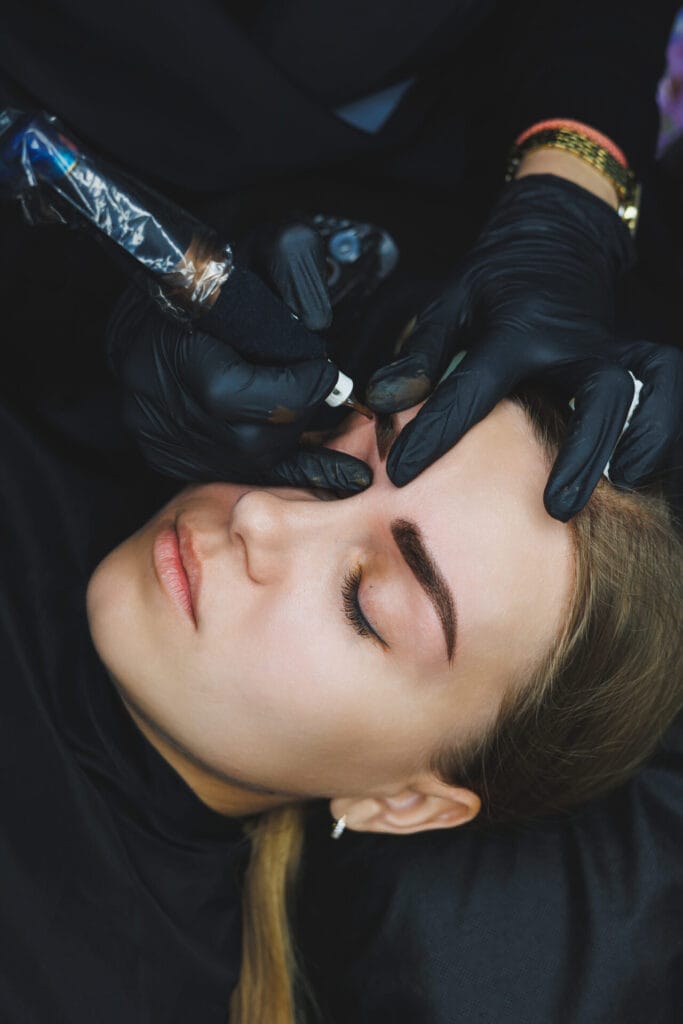
Microblading offers a natural-looking solution for those who want to enhance their eyebrows. The process involves using a small handheld tool to create hair-like strokes on the skin, resulting in a more defined shape and fullness. Preparing for a microblading appointment involves a consultation with the artist, following pre-treatment instructions, and bringing any reference photos or examples of desired eyebrow shape. Choosing the right microblading artist is crucial for achieving the desired results, and it is important to research different artists, ask questions during the consultation, and seek recommendations from friends and family.
Designing your dream eyebrow shape involves considering factors such as face shape, natural eyebrow shape and thickness, and personal style preferences. The microblading process itself includes numbing the area, drawing the eyebrow shape, and microblading the eyebrows. Aftercare instructions are important for optimal healing and long-lasting results, and pain management during the procedure can vary from person to person.
Microblading can be compared to other eyebrow techniques such as traditional tattooing, eyebrow tinting, and eyebrow extensions. Each technique has its own pros and cons, so it is important to consider personal preferences when choosing the right technique. Common microblading mistakes include over-plucking before the appointment, choosing the wrong eyebrow shape, and not following aftercare instructions. Touch-up appointments and proper maintenance are necessary for long-lasting results.
Microblading can be performed on different skin types, but there are tips and considerations for each type. Frequently asked questions about microblading include the duration of the procedure, post-care instructions, and maintenance tips. Overall, microblading offers numerous benefits for those who want to enhance their eyebrows and achieve their desired shape and fullness.



